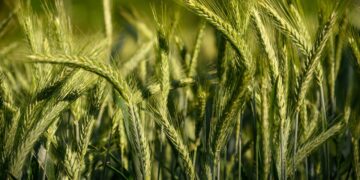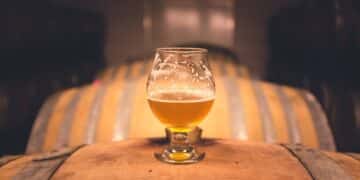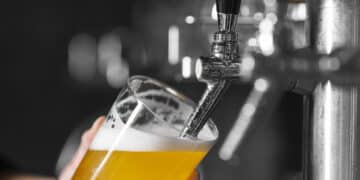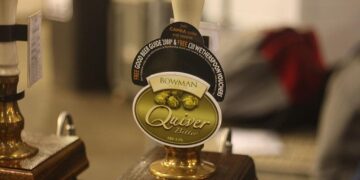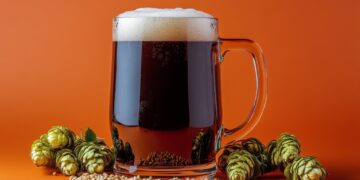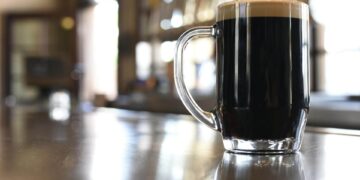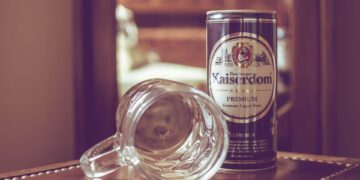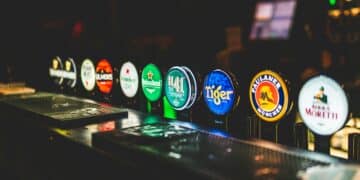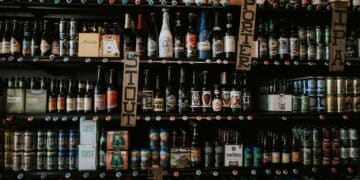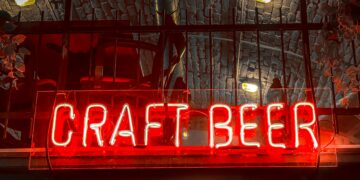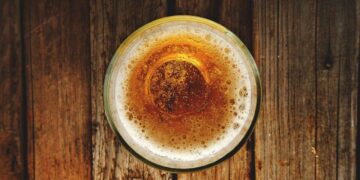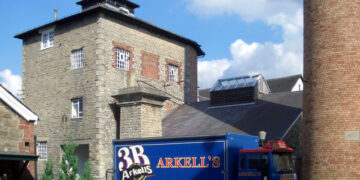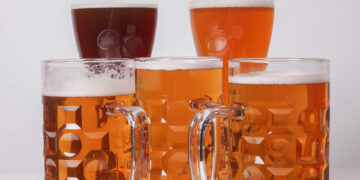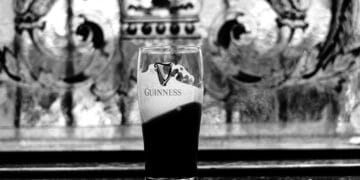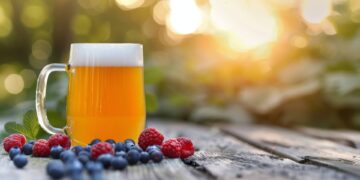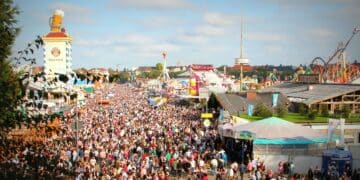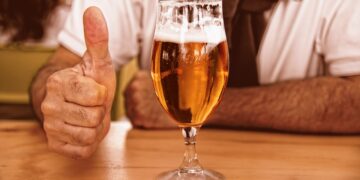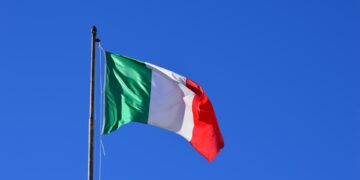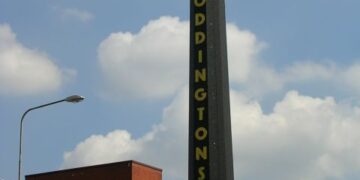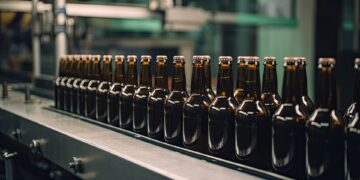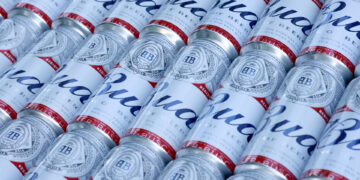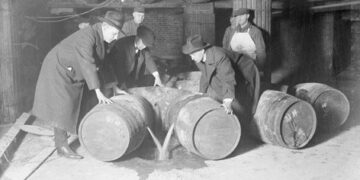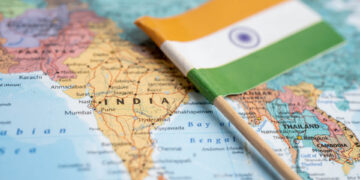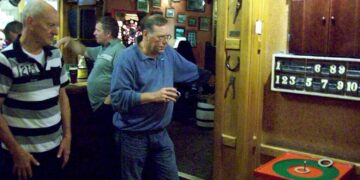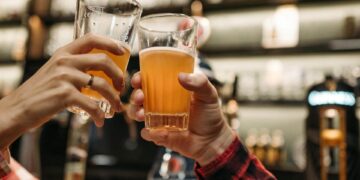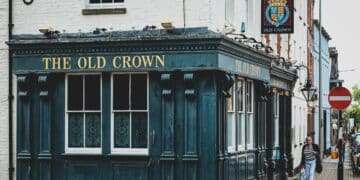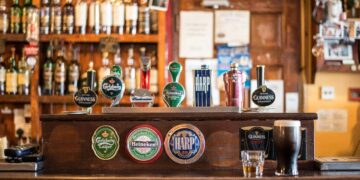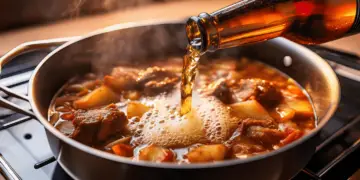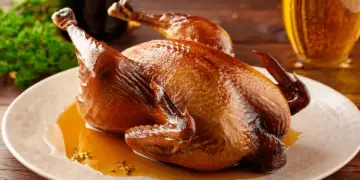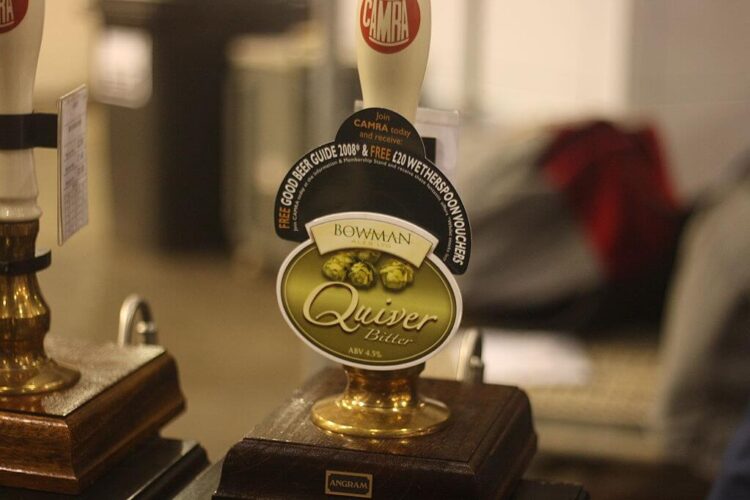The word ‘bitter’ is used in Britain to describe pale ale and other similar types of beer. The word has been in use since the early 19th century, when beer brewers began to develop and expand upon the production of pale ale. Bitters range greatly in colour, taste and strength, but most are golden or copper coloured with a light body and low carbonation, averaging 3-5 per cent alcohol by volume.
Bitter has been a main stay of the English diet and culture for over 150 years, and although the English are known in cliché for drinking warm beer, bitter should be served reasonably chilled to appreciate its rich, hoppy flavour.
Types Of Bitter
Session or Ordinary Bitter: Most present day British IPAs fall into this category, such as Greene King IPA, Flowers IPA, and Wadworth Henrys Original IPA. These beers are usually no stronger than 4% alcohol, and are not as strong or hoppy as the original IPAs of the 19th century.
Best or Regular bitter: This is the most commonly drunk bitter in Britain, usually between 4.1% and 4.7% alcohol by volume.
Premium or Strong Bitter: Best known as Fullers Extra Special Bitter (ESB), this is a strong type of beer being 4.8% alcohol by volume or over.
Light Ale: This type of beer is low in alcohol and hops, with a crisp clean character, and is sometimes served as a low alcohol alternative to normal beer.
The Beginnings of Bitter
Throughout the 18th and early 19th century the dark, heavy, ‘porter’ had been the prominent beer in Britain, particularly in London. Pale ale, or bitter, was made as early as 1703, but it would be more than a century later that it became the country’s most popular drink.
In 1784 the Saccharometer was invented, a device that measures sugar levels in liquids and enabled brewers to calculate the alcoholic content of their beers. It was established that pale malts had the potential to make more alcohol than brown malts so English beer makers began experimenting more widely with pale ales.
Bitters Rise in Popularity
The Victorians were a fashionable lot, their eagerness for progress and technical innovation matched by a desire for new trends and tastes. As lager swept through continental Europe in the mid 19th century it would be bitter that would become the beverage of choice in Britain (however the European craze for lager would also reach Scotland where brewing was more Germanic in style than the rest of the U.K.).
Out in the British colonies there was a huge demand for beer, with ex-pats spending much of their spare time imbibing. There was a particular call for strong beers in the sweltering climate of India. However, a six-month journey in hot and stormy weather presented difficulties in exporting alcoholic drinks from Britain to India resulting in beers such as porter reaching the sub-continent unpleasantly sour and flat. In response to Indian Pale Ale (IPA) was developed. First made by the brewer George Hodgson at the Bow Brewery in east London in the 1780s, IPA was stable enough to survive the punishing journey due to a high alcohol and hop content which guarded against decay and souring. In 1784 the Calcutta Gazette carried an advertisement for “light and excellent” pale ale, and IPA became a huge success.
It is unclear how IPA was introduced to the domestic market, but there is a story that claims to explain how people in northwest England developed a liking for the drink. During a storm in the Irish Sea a ship loaded with barrels of IPA bound for India was wrecked, the barrels washed up on the coast near Liverpool. When locals discovered the beer several days of merry making ensued that left Liverpudlians with a taste for pale ales. Whether or not this tale is true, the Burton breweries began producing IPA for consumption in the UK.
Russians had maintained a prohibitory tariff on foreign drinks to protect their own black beer. This tariff was lifted in 1820 so Allsops made a large quantity of bitter in anticipation of supplying to Russian drinkers. However the tax was reinstated in 1822 so the brewer was left with a huge amount of beer that was then sold in the UK. The beer was greeted with some enthusiasm in the northwest, but pale ales were yet to match porter’s grip on the lucrative London market. Pale Ale, or Bitter was beginning to develop a national and international reputation.
In 1845 the excise duty on glass was abolished. This meant that beers could be served in mass-produced glass bottles and tankards rather than the opaque stoneware vessels that were previously the norm. Suddenly drinkers were more aware of the nature of what they were consuming, with porter looking rather unappetisingly like filthy, muddy water. Pale ales, in contrast, were golden sparkling beers, a much more attractive proposition. Improved transport and fermentation meant that bitter was set to become immensely popular in London and across the country, amongst both the working classes and the fashion conscious middle class.
The Future of Bitter
Bitter was the beer of choice from the mid 19th century onwards and brewers continued to develop their techniques leading to, it could be argued, the production of inferior quality beers. However, there are a multitude of small breweries now producing authentic bitters to original recipes and methods, such as the Southwick Brewhouse, Fareham; a restored and rescued brewery with a history that runs back to the 17th Century.





